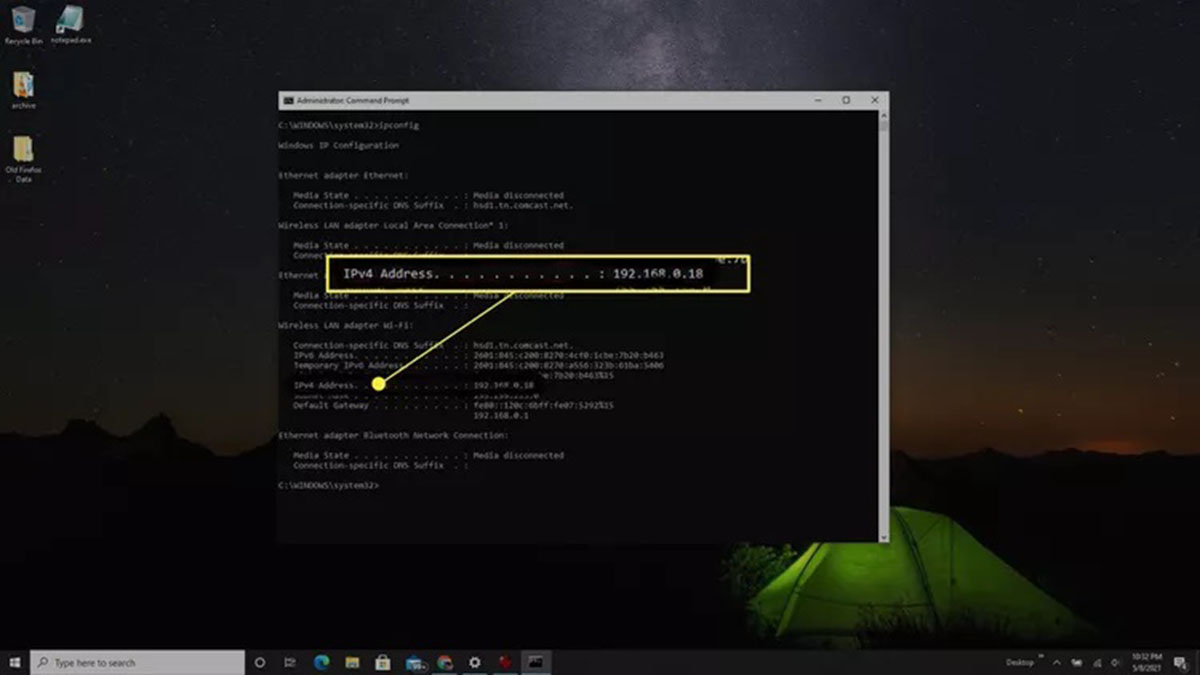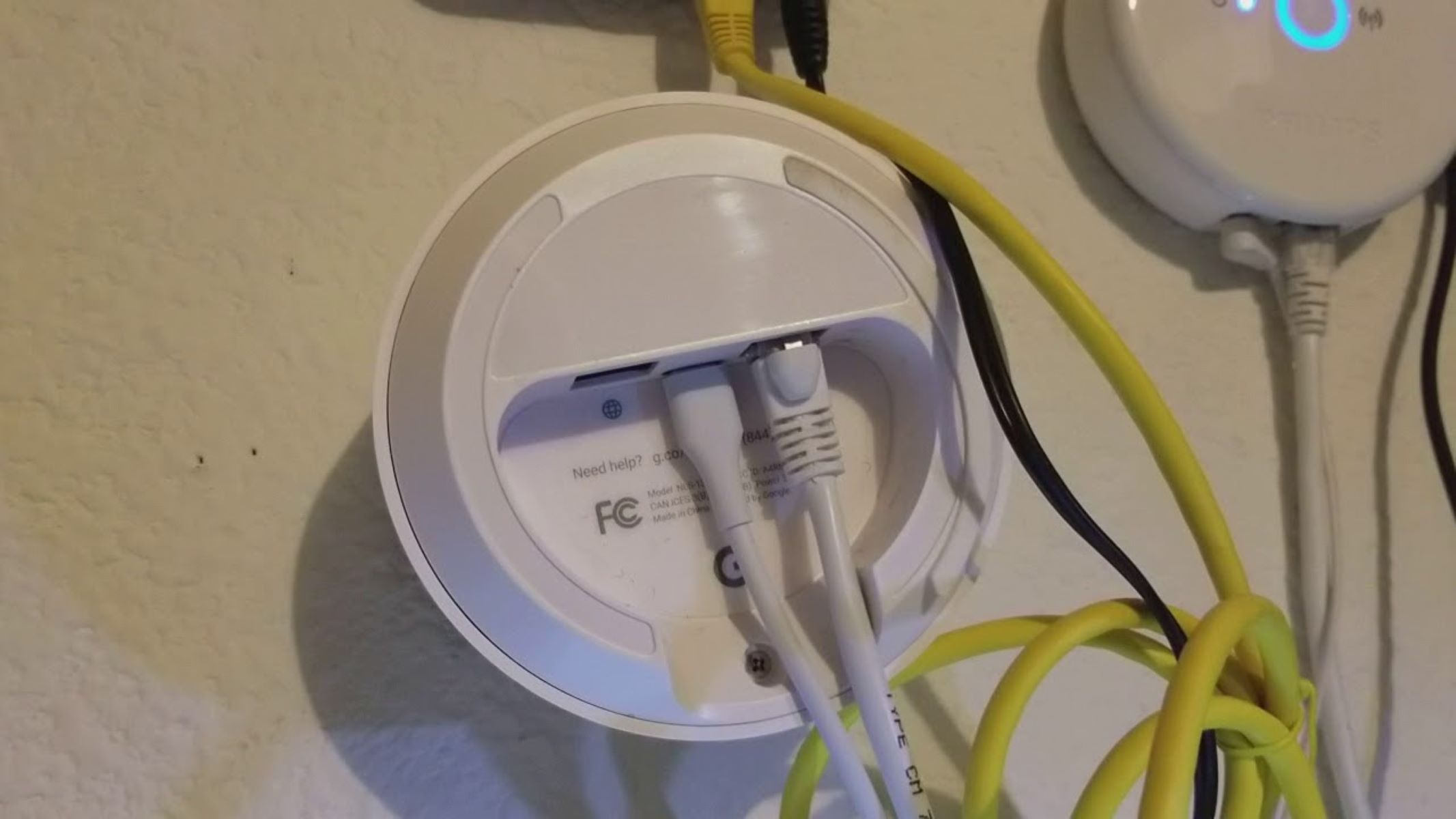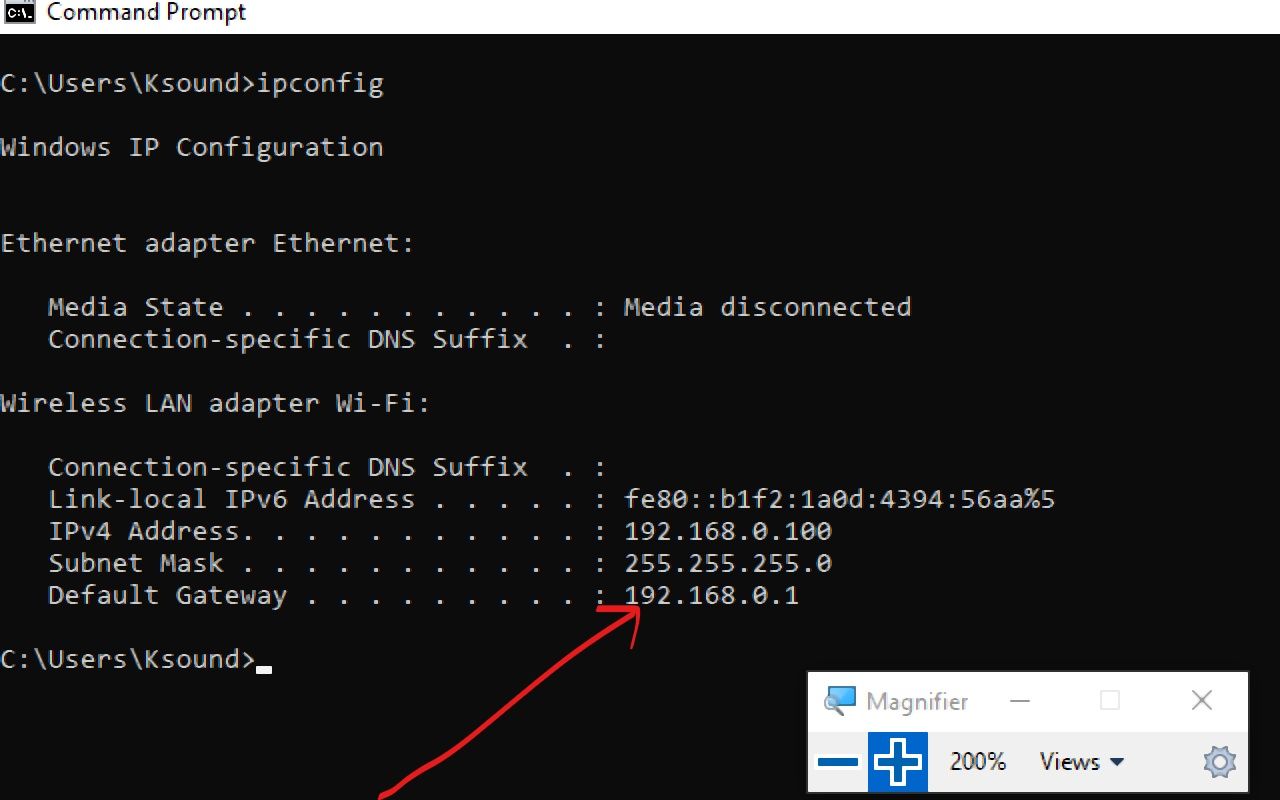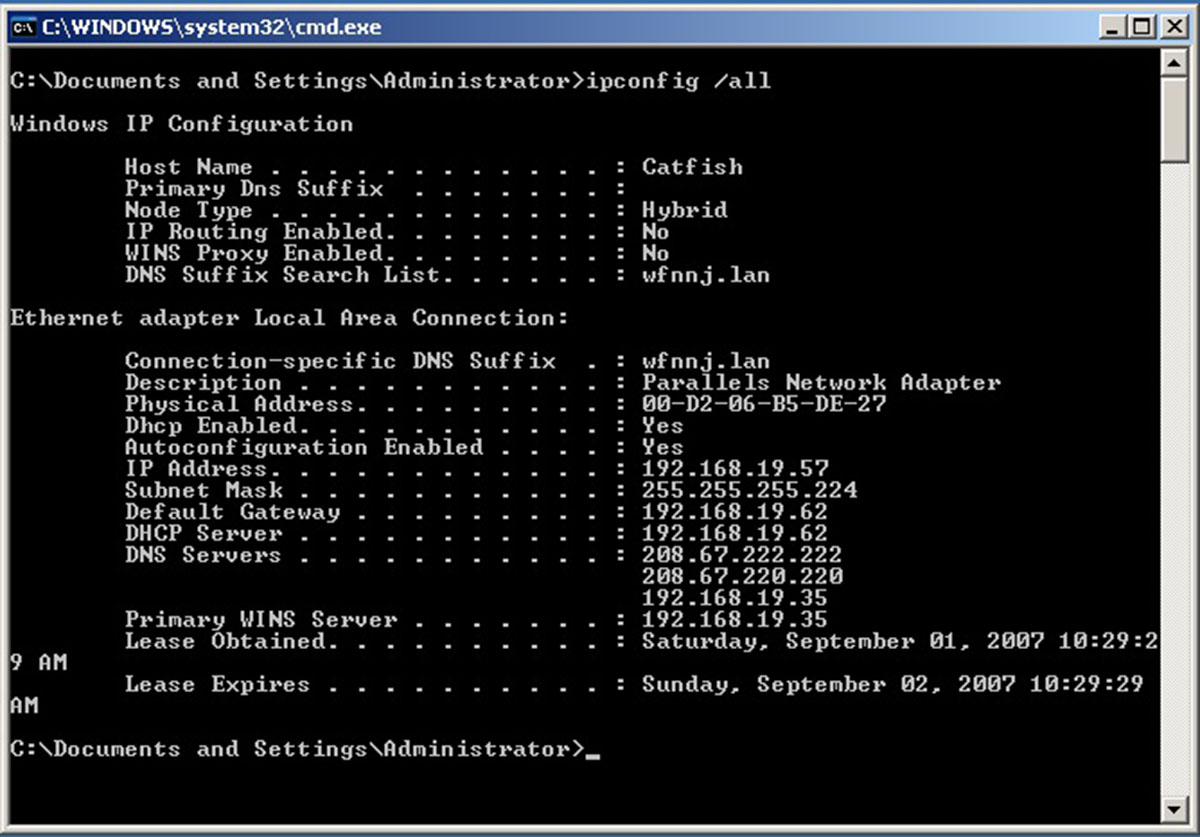Introduction
Setting a static IP address in Windows 10 can be a useful skill for those who want more control over their network configuration. By assigning a static IP address to your computer, you can ensure that it always has the same IP address, regardless of any changes in the network. This can be particularly helpful when configuring network devices, setting up a local server, or troubleshooting network connectivity issues.
In this guide, we will walk you through the step-by-step process of setting a static IP address in Windows 10. Whether you are a computer enthusiast or a network administrator, understanding how to configure a static IP address can empower you to take charge of your network setup and optimize your network performance.
Before we delve into the steps, it is important to note that setting a static IP address requires administrative privileges. So, make sure you have the necessary permissions to make changes to your network adapter settings. Additionally, it is crucial to have a clear understanding of the IP address range used in your network, as well as the subnet mask and default gateway values.
Without further ado, let’s start exploring the process of setting a static IP address in Windows 10. By following these steps, you’ll be able to easily configure your network settings and enjoy a more stable and reliable network connection on your Windows 10 device.
Why Set a Static IP Address in Windows 10?
Having a static IP address on your Windows 10 device can offer several benefits and improved control over your network configuration. Here are a few reasons why you might want to consider setting a static IP address:
1. Port Forwarding and Remote Access: If you frequently access your Windows 10 device remotely or need to configure port forwarding for applications or services, having a static IP address makes the process much easier. With a static IP, you can consistently access your device from anywhere and ensure that the correct ports are forwarded.
2. Stable Network Configuration: When connecting to a network, devices are typically assigned dynamic IP addresses that can change each time the device connects to the network. This dynamic nature of IP addresses can cause disruptions in services that rely on a consistent IP address, such as file sharing or network printing. By setting a static IP address, you eliminate the risk of IP address changes and maintain a stable network configuration.
3. Easy Network Device Management: If you have multiple network devices, such as printers, media servers, or IoT devices, setting a static IP address for each device can simplify management and troubleshooting. With static IPs, you can easily identify and connect to specific devices without the need to manually adjust IP configurations.
4. Improved Security: In certain scenarios, having a static IP address can enhance network security. With a static IP, you can easily set up firewall rules and access controls to allow or deny specific IP addresses. Additionally, it reduces the risk of unauthorized access or IP address conflicts in your network.
5. Network Performance Optimization: In some cases, setting a static IP address can improve network performance. While dynamic IP addresses work well in most situations, there might be instances where assigning a specific IP address to your Windows 10 device can result in faster network response times and reduced latency.
By understanding the advantages of setting a static IP address in Windows 10, you can determine whether it is a suitable option for your specific network requirements. Now, let’s dive into the step-by-step process of setting a static IP address in Windows 10.
Step 1: Open Network and Sharing Center
To begin the process of setting a static IP address in Windows 10, you first need to navigate to the Network and Sharing Center. This is where you can access the network adapter settings and make the necessary changes. Follow these steps:
1. Right-click on the network icon located in the system tray or taskbar. This icon usually resembles a series of bars or a computer monitor, indicating your network connection status.
2. From the context menu that appears, select “Open Network & Internet settings” or a similar option, depending on your Windows 10 version.
3. This will open the Network & Internet settings window. Here, you will find various network-related settings and options.
4. Look for the “Change adapter options” link and click on it. This will take you to the Network Connections window.
5. In the Network Connections window, you will see a list of all the network adapters available on your computer. These adapters may include both wired and wireless connections.
6. Identify the network connection for which you want to set a static IP address. Right-click on the desired network connection and select “Properties” from the context menu.
By following these steps, you have successfully opened the Network and Sharing Center and accessed the properties of the network connection. In the next step, we will explore how to change the adapter settings to configure the static IP address.
Step 2: Change Adapter Settings
In this step, we will learn how to change the adapter settings for the network connection in order to configure a static IP address. Follow these steps:
1. After opening the properties of the desired network connection, you will find a list of different network protocols and services. Look for the protocol called “Internet Protocol Version 4 (TCP/IPv4)” and select it.
2. Once you have selected the “Internet Protocol Version 4 (TCP/IPv4)” protocol, click on the “Properties” button below it. This will open the TCP/IPv4 Properties window.
3. In the TCP/IPv4 Properties window, you will see two options: “Obtain an IP address automatically” and “Use the following IP address.” By default, the first option is usually selected.
4. To set a static IP address, select the “Use the following IP address” option. This will activate the input fields for you to manually enter the IP address, subnet mask, default gateway, and DNS server addresses.
By changing the adapter settings to use a static IP address, you gain more control over your network configuration. In the next step, we will explore how to set a specific IP address for your Windows 10 computer.
Remember, the IP address you choose should be within the range of your network’s IP addresses. It should also be unique and not already assigned to another device on the network. Additionally, be sure to have the correct subnet mask and default gateway values, as these are essential for proper network communication.
Step 3: Select the Network Connection
In this step, we will focus on selecting the network connection for which you want to set a static IP address. This ensures that the changes you make only apply to the desired network interface. Follow these steps:
1. After opening the properties of the network connection, click on the “Networking” tab at the top of the window. Here, you will find a list of networking components and protocols associated with the selected network connection.
2. Within the networking components list, scroll down and locate the “Internet Protocol Version 4 (TCP/IPv4)” protocol. Click on it to select it.
3. With the “Internet Protocol Version 4 (TCP/IPv4)” protocol selected, click on the “Properties” button below. This will open the TCP/IPv4 Properties window.
4. In the TCP/IPv4 Properties window, you will see the options to choose between obtaining an IP address automatically or using a specific IP address. If you have already selected the “Use the following IP address” option in the previous step, you can proceed to the next step. Otherwise, select that option now.
By selecting the network connection and accessing its specific properties, you are ready to configure the static IP address for that particular connection. In the next step, we will delve into the details of configuring the TCP/IPv4 settings to set the static IP address.
Step 4: Open Properties
In this step, we will explore how to open the network connection properties where you can make changes to the TCP/IPv4 settings. By accessing these properties, you can further configure the network connection and set a static IP address. Follow these steps:
1. After selecting the “Internet Protocol Version 4 (TCP/IPv4)” protocol, click on the “Properties” button. This will open the TCP/IPv4 Properties window.
2. In the TCP/IPv4 Properties window, you will see two options: “Use the following IP address” and “Obtain an IP address automatically.” If you have already selected the “Use the following IP address” option, you will see the IP address, subnet mask, default gateway, and DNS server fields activated.
3. If you haven’t selected the “Use the following IP address” option, select it now. This will allow you to manually configure the IP address, subnet mask, default gateway, and DNS server settings.
4. Click on the “OK” button to save the changes and close the TCP/IPv4 Properties window.
By opening the properties of the network connection, you gain access to all the necessary settings and configurations to set a static IP address. In the next step, we will dive into the details of configuring the TCP/IPv4 settings to set the actual static IP address.
Step 5: Configure TCP/IPv4 Settings
In this step, we will focus on configuring the TCP/IPv4 settings to set the static IP address for your Windows 10 computer. Follow these steps:
1. After opening the TCP/IPv4 Properties window, you will see various input fields where you can enter the required information.
2. In the “IP address” field, enter the specific IP address you want to assign to your Windows 10 computer. Make sure the IP address falls within the valid range of IP addresses for your network.
3. In the “Subnet mask” field, enter the subnet mask value. The subnet mask is used to determine the network portion and host portion of an IP address. It is typically provided by your network administrator or Internet Service Provider.
4. In the “Default gateway” field, enter the IP address of your network’s default gateway. The default gateway is responsible for routing network traffic outside of your local network.
5. In the “Preferred DNS server” field, enter the IP address of the DNS server you wish to use. The DNS server is responsible for translating domain names into IP addresses, allowing your computer to access websites and other network resources.
6. Optionally, you can also enter the IP address of the “Alternate DNS server” if you have one available. This acts as a backup DNS server in case the preferred DNS server is unavailable.
7. Once you have entered all the necessary information, click on the “OK” button to save the changes and close the TCP/IPv4 Properties window.
By configuring the TCP/IPv4 settings, you have successfully set a static IP address for your Windows 10 computer. In the next step, we will explore additional settings such as the subnet mask and default gateway.
Step 6: Set Static IP Address
In this step, we will focus on setting the static IP address for your Windows 10 computer. By following these instructions, you can ensure that your computer always uses the same IP address when connecting to the network:
1. After configuring the TCP/IPv4 settings, ensure that the “Use the following IP address” option is selected in the TCP/IPv4 Properties window.
2. In the “IP address” field, enter the specific IP address that you want to assign to your Windows 10 computer. This IP address should be unique and not already assigned to another device on the network.
3. Make sure the IP address falls within the valid range of IP addresses for your network. Consult your network administrator or refer to your router’s documentation to determine the appropriate IP address range.
4. Double-check the “Subnet mask” field to ensure it matches the correct value for your network. The subnet mask determines the size of the network by indicating which part of the IP address represents the network portion and which part represents the host portion.
5. Once you have entered the IP address and subnet mask, you can proceed to the next step.
6. Ensure that the “Default gateway” field is correctly populated with the IP address of your network’s default gateway. The default gateway allows your computer to communicate with devices outside of your local network.
7. If you have a preferred DNS server, make sure its IP address is entered in the “Preferred DNS server” field. The DNS server is responsible for resolving domain names into IP addresses and plays a crucial role in your computer’s ability to access websites and other network resources.
8. Remember, these settings are specific to the network connection you are configuring. If you have multiple network adapters, make sure you apply the changes to the correct one.
9. Once you have verified and entered all the necessary information, click on the “OK” button to save the changes.
By successfully setting a static IP address, you have taken control over your computer’s network configuration. In the next step, we will explore additional settings such as the subnet mask and default gateway to further refine your network setup.
Step 7: Set Subnet Mask and Default Gateway
In this step, we will focus on setting the subnet mask and default gateway for your Windows 10 computer. These settings are essential for proper network communication and routing. Follow these steps:
1. After entering the desired IP address in the TCP/IPv4 Properties window, ensure that the correct subnet mask is entered in the “Subnet mask” field. The subnet mask determines the size of the network by indicating which part of the IP address represents the network portion and which part represents the host portion. It is typically provided by your network administrator or Internet Service Provider.
2. Double-check your subnet mask to ensure that it matches the correct value for your network. The subnet mask will consist of four numbers separated by periods, such as 255.255.255.0, which represents a common subnet mask configuration.
3. Next, ensure that the “Default gateway” field is correctly populated with the IP address of your network’s default gateway. The default gateway allows your computer to communicate with devices outside of your local network. It is usually the IP address of your router.
4. The default gateway is crucial for routing network traffic, so it is important to enter the correct IP address to ensure proper connectivity. If you are unsure, consult your network administrator or refer to your router’s documentation to obtain the correct default gateway IP address.
5. Verify that both the subnet mask and default gateway fields are accurately filled in the TCP/IPv4 Properties window.
6. Once you have verified and entered the necessary information, click on the “OK” button to save the changes.
By setting the subnet mask and default gateway, you are optimizing your network configuration and enabling your Windows 10 computer to communicate effectively with devices both inside and outside of your local network. In the next step, we will explore how to set the preferred DNS server.
Step 8: Set Preferred DNS Server
In this step, we will focus on setting the preferred DNS server for your Windows 10 computer. The DNS server is responsible for translating domain names into IP addresses, allowing your computer to access websites and other network resources. Follow these steps to configure the preferred DNS server:
1. After entering the desired IP address, subnet mask, and default gateway in the TCP/IPv4 Properties window, locate the “Preferred DNS server” field.
2. In the “Preferred DNS server” field, enter the IP address of the DNS server you wish to use. This can be the IP address of your network’s DNS server or a public DNS server such as those provided by Google (8.8.8.8) or Cloudflare (1.1.1.1).
3. The DNS server is responsible for resolving domain names into IP addresses. By setting a preferred DNS server, you ensure that your computer uses a specific DNS server for all its DNS queries.
4. Configuring a preferred DNS server can improve network performance and reliability. It also allows you to choose a DNS server that suits your needs, such as one that offers enhanced security features or faster response times.
5. In addition to the preferred DNS server, there is an optional field for entering an “Alternate DNS server.” This serves as a backup DNS server in case the preferred DNS server becomes unavailable. If you have an alternate DNS server available, you can enter its IP address in this field.
6. Once you have entered the preferred DNS server or the preferred and alternate DNS servers, click on the “OK” button to save the changes in the TCP/IPv4 Properties window.
By setting the preferred DNS server, you are ensuring that your Windows 10 computer has accurate and responsive DNS resolution. This enables seamless access to websites and other network resources. In the next step, we will discuss how to save the changes made and test the network connection.
Step 9: Save Changes and Test Connection
In this final step, we will cover how to save the changes made to the network settings and test the connection to ensure that the static IP address is successfully configured. Follow these steps:
1. After configuring the preferred DNS server and completing all the necessary changes in the TCP/IPv4 Properties window, click on the “OK” button. This will save the changes and close the window.
2. Back in the Network Connections window, take a moment to review the network connection properties and ensure that all settings are correct.
3. Once you are satisfied with the settings, close the Network Connections window.
4. To test the network connection, open a web browser or any application that requires internet access. Visit a website or perform any action that requires internet connectivity.
5. If the connection is successful and you are able to access the internet without any issues, congratulations! You have successfully set a static IP address in Windows 10.
6. If you encounter any problems or cannot access the internet, double-check the settings you entered in the TCP/IPv4 Properties window. Ensure that the IP address, subnet mask, default gateway, and preferred DNS server are all correct. Additionally, check that there are no typographical errors or conflicting IP addresses.
7. If you are still experiencing difficulties, you may need to consult your network administrator or refer to your router’s documentation for further troubleshooting steps.
By saving the changes and testing the connection, you can confirm whether the static IP address is properly configured on your Windows 10 computer. This step ensures that your device can successfully communicate with other devices on the network and access the internet. Congratulations on successfully setting a static IP address!
Conclusion
Setting a static IP address in Windows 10 can provide you with greater control over your network configuration and offer several advantages. By following the step-by-step process outlined in this guide, you have learned how to open the Network and Sharing Center, change adapter settings, select the network connection, open properties, configure TCP/IPv4 settings, set a static IP address, configure the subnet mask and default gateway, set the preferred DNS server, and finally, save the changes and test the connection.
With a static IP address, you can easily set up port forwarding, remotely access your Windows 10 device, and manage network devices more effectively. Additionally, you can enjoy a stable network configuration, improved security, and better network performance optimization.
Remember, while setting a static IP address can be beneficial, it is important to ensure that the IP address you choose falls within the valid range for your network and is unique. Additionally, accurate configuration of the subnet mask, default gateway, and preferred DNS server is crucial for proper network communication.
If you encounter any issues or have questions, don’t hesitate to consult your network administrator or refer to your router’s documentation for further guidance. They can provide additional assistance tailored to your specific network setup.
By taking control of your network configuration through setting a static IP address in Windows 10, you empower yourself with a more stable and reliable network connection. Whether you are a computer enthusiast or a network administrator, this knowledge helps you optimize your network setup and streamline your network troubleshooting process.
Now that you have successfully configured a static IP address, enjoy the benefits of a more personalized and controlled network experience on your Windows 10 computer.

























